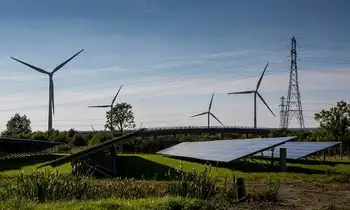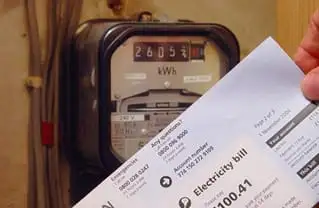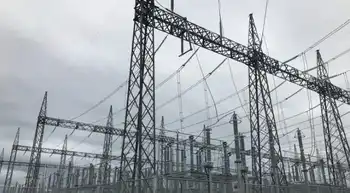Boom and bust in the uranium industry
By The Grand Junction Daily Sentinel
NFPA 70e Training
Our customized live online or in‑person group training can be delivered to your staff at your location.

- Live Online
- 6 hours Instructor-led
- Group Training Available
Like the half-lives by which radiation is judged to decay, though, the industry never has died. Two companies are burrowing into the red bluffs and canyons of western Colorado and eastern Utah to dig out uranium and start the process of generating electricity.
Although the history of the uranium industry in the region goes back to Madame Curie and her discoveries in the late 19th Century, the supply is far from played out.
Miners dug out about 250 million pounds of uranium for the World II and Cold War efforts, said George Glasier, president and CEO of Energy Fuels Inc., a Canadian, publicly traded company.
“We got the easy stuff the first time,” Glasier said.
Now, determinations of how much uranium is available depend on its value.
“I believe there are 125 million pounds in this immediate area” that can be produced for $45 a pound, Glasier said. “If it goes to $100 (a pound) we’ve got 300 million or 400 million.”
One estimate for a small portion of land in the Uravan Mineral Belt, 31 tracts, is the those lands being leased out by the U.S. Department of Energy contain 130 million pounds of uranium.
The United States now consumes about 50 million pounds of uranium oxide a year, said Glenn McGrath of the U.S. Energy Information Administration.
Though less optimistic about the size of the resource than Glasier, McGrath said the United States will have to turn more and more inward as it looks for secure sources of nuclear energy.
Several factors weigh in on the market value and importance of uranium that reaches the outside world via western ColoradoÂ’s Energy Alley.
Much of the uranium needed for the rods that now fire the plants has come from demilitarized uranium left over from the Cold War, said Jim Burnell, senior minerals geologist for the Colorado Geological Survey.
Two major international suppliers of uranium, meanwhile, are out of commission temporarily and possibly permanently. The Cigar Lake Mine in Canada flooded, and the Olympic Dam mine in Australia is out of production because of a shaft accident.
“It’s a very real issue that we are fairly dependent on uranium from other sources than the United States,” McGrath said.
While issues such as national security and the availability of uranium factor into its value, there are other factors pushing nuclear power back to prominence.
Population growth, increasing demand for electricity to power a growing variety of devices, from refrigerators to computers, all are pushing up the need for electricity-generating fuel.
“Opinions vary regarding the future of nuclear power, but it is a fact that existing U.S. plants are performing well,” the U.S. Energy Information Administration says of nuclear power, noting nuclear power plants now operate at a 90 percent capacity factor, compared to 56 percent in 1980.
Fuel costs for nuclear fuel average less than one-half cent per kilowatt hour, well below the costs of major competing fossil fuels, the Energy Information Administration analysis said.
Production costs for nuclear power, operation and maintenance plus fuel costs, are also low, averaging 1.8 cents per kilowatt hour. That cost roughly matches coal and is significantly below the costs of operating a natural gas plant, the Energy Information Administration said.
Nuclear power now provides 20 percent of the United StatesÂ’ electricity, a portion that is likely to increase as 30 nuclear plants that are under construction come online, according to federal estimates.
The U.S. Nuclear Regulatory Commission, meanwhile, is reviewing 13 combined applications for 22 more nuclear power plants.
It could take 50 years to produce the uranium lodged deep beneath the sandstone and sagebrush of the west end of the most important 150 miles, Glasier said, because the industry is limited by milling capacity.
Energy FuelsÂ’ planned mill near Naturita and Denison MinesÂ’ mill in Blanding, Utah, together will produce a combined 7 million to 10 million pounds a year, Glasier said.
Energy FuelsÂ’s application to construct the mill was deemed complete in December, and officials with the Colorado Department of Public Health and Environment have begun the review process, which includes public meetings in the area. How quickly the uranium industry is sparked back to life will depend on a variety of factors, from the difficulty and cost of finding and milling it to demand for nuclear power.
There also are legal challenges the industry would have to overcome. Environmental groups have filed suit against Montrose County, alleging its land-use approval decision for the Energy Fuels mill was arbitrary. Other groups are challenging the Energy DepartmentÂ’s leasing program, questioning the potential effects of the mining on endangered species in the Colorado River Basin.
Some environmental groups, however, tend to favor nuclear energy because it doesnÂ’t produce what are deemed greenhouse gases contributing to global warming.
“The bigger issue for uranium is: Will a significant portion of the world choose nuclear power as the clean fuel of choice?” said Dr. Rod Eggert, director of the division of economics and business at Colorado School of Mines. “Right now, there’s a lot of speculation, but exactly how large demand will grow, no one knows.”
The fourth time could be a charm for a nuclear-power plant in the shadow of the Book Cliffs overlooking the Green River valley at the west end of Energy Alley, the 150 miles from Green River, Utah, to Rifle.
Three times since the 1960s, said Aaron Tilton, CEO of Blue Castle Holdings, companies have sought to build nuclear plants near Green River.
“It’s a natural place” for such a plant, Tilton said.
Even though Green River sits within miles of some of the nationÂ’s richest deposits of uranium in the canyon country of Utah and Colorado, itÂ’s not the proximity to fuel that gives impetus to the project.
This time the project could work, Tilton said, because Utah is fast becoming power-starved as its population grows, even while coal and natural gas plants are denied in the permitting process.
“I see some real problems with electricity,” said Mike McCandless, who heads the economic-development effort for Emery County, home to Green River. “Utah is a net importer of electricity now. Rocky Mountain Power has had to cancel every project they’ve had.”
Rocky Mountain Power is part of MidAmerican Energy Holdings Co., which is owned by billionaire Warren BuffetÂ’s Berkshire Hathaway Inc. The inability to win approval for gas-fired plants boosts the prospects of developing nuclear power in Green River, McCandless said.
Green River has an additional advantage in that it sits along one of the national energy corridors established under the auspices of the 2005 Energy Policy Act.
Congress ordered officials to designate federal land in 11 western states for energy corridors that would include oil, gas and hydrogen pipelines and electricity transmission and distribution facilities.
Utah isnÂ’t alone in needing electricity. Arizona, Nevada and California also are hunting for electricity for their populations, Tilton said.
“This is the part of the nation that is growing the fastest,” and that’s driving the search for more energy in places like Green River and the rest of Emery County, McCandless said.
The nuclear plant, which would sit in the shadow of Blue Castle Peak at the base of the Beckwith Plateau west of Green River, would generate 3,000 megawatts of electricity, or enough electricity for about 1 million homes.
Transition, Power Development, which owns the Blue Castle project, has hired a primary contractor, ENERCON, to prepare the companyÂ’s application for an early site permit from the Nuclear Regulatory Commission.
The project also has an agreement with the Page, Arizona, Electric Utility that sets out the utilityÂ’s potential role as an owner of the project.
Blue Castle will begin a yearlong, data-collection process at the 1,000-acre site early next year as it opens its permitting effort.
Once the Blue Castle backers establish their water rights, more backers will emerge, Tilton said.
Emery County already has two coal-fired power plants, Huntington and Hunter, which together generate about 2,500 megawatts.
The Page, Arizona, utility has declared interest in buying power for its 8,000 customers from the Blue Castle nuclear plant should it be constructed in an industrial park west of Green River.
For McCandless, the nuclear plant is part of a many-pronged effort to make maximum use of the county assets.
McCandless also is working with developers who want to build a 40-acre, solar-voltaic field, and heÂ’s optimistic that on the opposite side of Green River a small refinery will start pumping out fuel from kerogen roasted out of oil shale.
Another company, meanwhile, Conductive Composites Co., is gearing up to manufacture a variety of electrically conductive resins, adhesives, coatings, composites and other systems from Green River.
“Green River is on a tipping point,” said Joni Pace, a local activist working to boost Green River’s economy.
The nuclear plant could be part of the reversal of the townÂ’s fortunes, Pace said.
“I like it,” she said. “I think we need it.”
Amy Wilmath, who works on the town ambulance, runs the Green River Coffee Shop and sits on the planning and zoning commission, said she has some doubts as to the final site.
Wilmath said she worries about the possible air-quality implications for a project upwind from the town, as well as the ability of the town to supply the workforce needed to build and operate a nuclear-power station.
On the other hand, the town needs investment, Wilmath said.
“Any industry in Green River is a much-needed thing,” she said.











